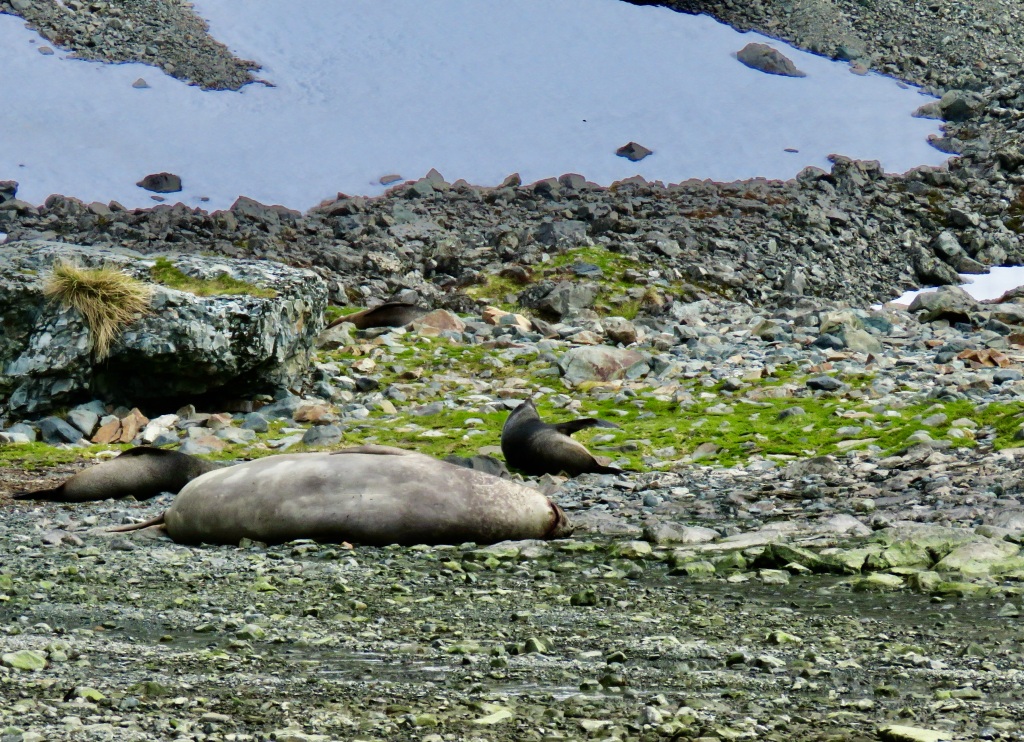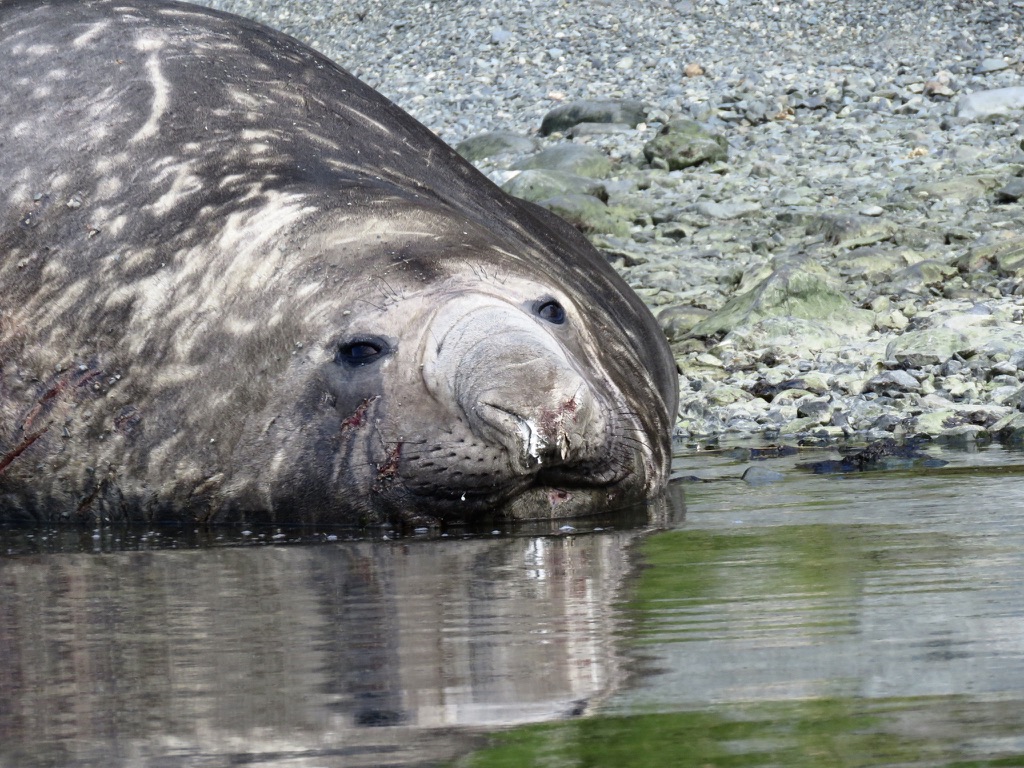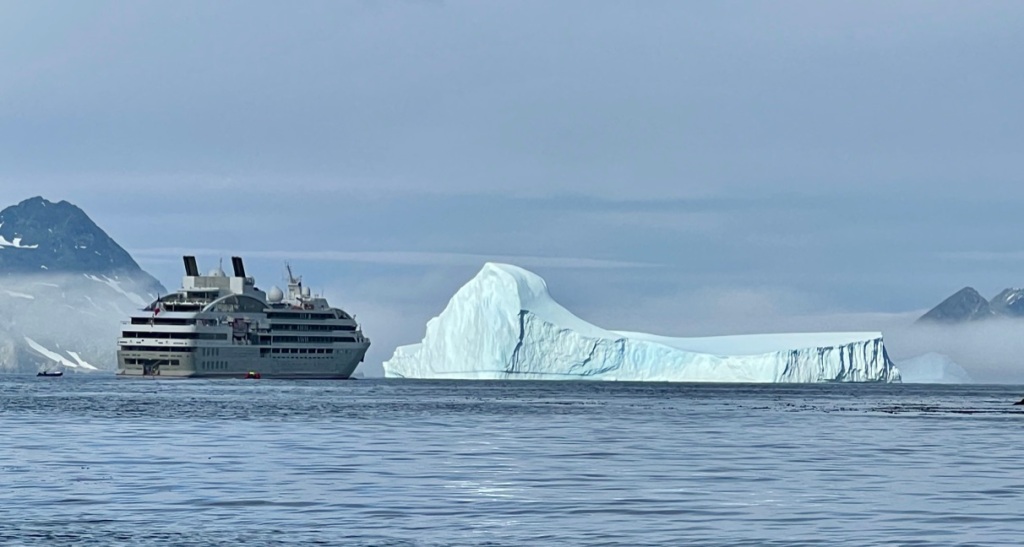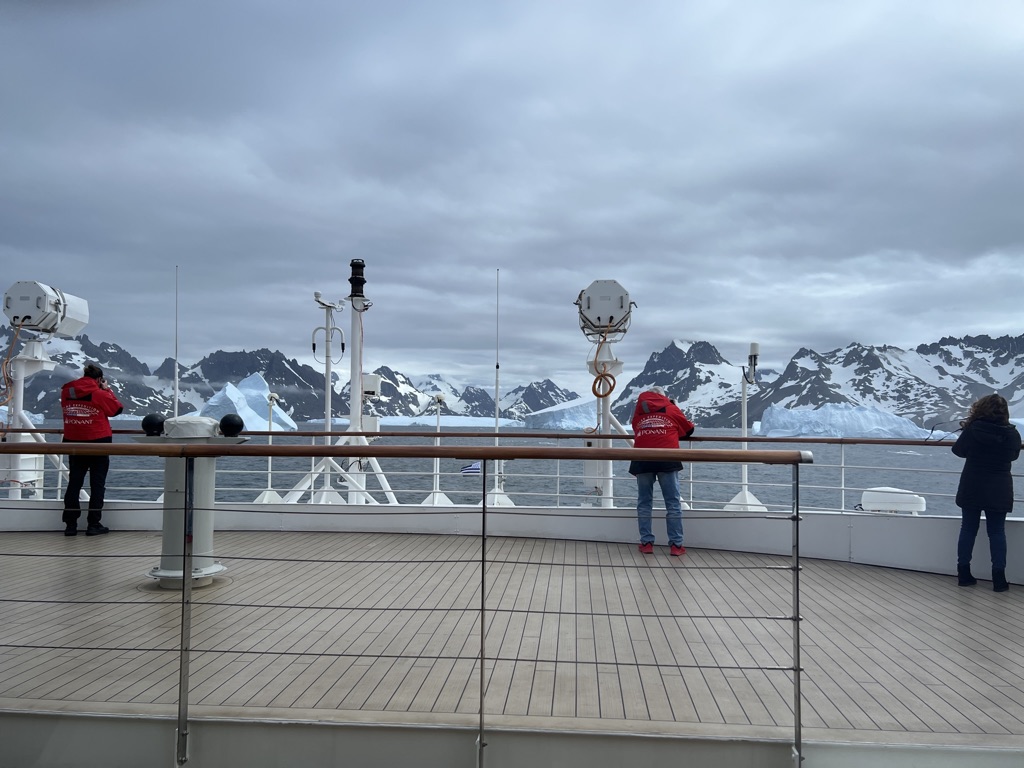MORE SEALS, PENGUINS, ALBATROSS AMID GLACIERS AND FIORDS
One of the exciting activities on an Antarctic expedition is exploring in the zodiacs. To the south of the island of South Georgia there are a few bays with spectacular backdrops. Amongst these are Golden Harbour which is a small bay that leads to the Bertrab Glacier. The bay is called as such because the cliffs around the bay shine yellow in the hour after sunrise and again before sunset. We were lucky to witness this and found the beach ringing with the cries of king penguins, gentoo penguins and elephant seals all of whom like to breed in the sheltered bay. Add to this the cries of the sooty albatross who come here every year to mate and raise their chicks.
At nearby Larsen Harbour we found our first Weddell seal – these seals are amongst the largest of the species and are commonly found on ice fastened to land. They gather in small groups around cracks and holes within the ice and in the winter they stay in the water to avoid blizzards with only their heads poking through breathing holes in the ice. When on land they are often found lying on their sides. Some populations breed on land, which is why we found a couple in South Georgia. Normally they live on the ice and around ice holes and cracks underwater. They forage and feed on fish, squid, octopus and prawns and can stay underwater for up to 45 minutes to an hour. They are placid and the more we heard about their habits and lives, the more fascinating they became especially as it is rare to see them on land.


Living in harmony with the Weddell seals are the elephant seals – and these are also huge creatures and were just lying in the shallows and were not bothered by our zodiac or the little penguins close by.




Approaching the Drygalski Fjord, the ship found safe anchorage and we set off for a trip in the zodiac getting close to the glacier and the waterfalls as well as the wildlife. The Fjord lies just a short distance from Cape Disappointment which was named by Captain James Cook when he rounded it in 1775 to learn he was circumnavigating an island and had not, after all, discovered the fabled southern continent. The fjord is 14 km long and sits above an important geological faultline. The mountains on the southern side are covered with the Risting and Jenkins glaciers which slowly pour into the head of the fjord.






There is a feeling of amazement when riding in the zodiac among huge mountains, hearing the birds’ cries above and seeing the waterfalls fall into the fjord while on the other side, the glacier sits majestically. Our guide asked us to sit silently for several minutes to absorb the quietness and beauty all around. A roar of what sounded like thunder pierced the silence and then a small avalanche up in the mountains occurred with tons of snow tumbling down. This apparently happens regularly at this time of year, the start of summer and warmer temperatures after a long, cold winter.
At the mouth of the fjord was a large iceberg – one of many we encountered later in the trip but first we had to cross the infamous Drake Passage to reach the Antarctic Peninsula.



